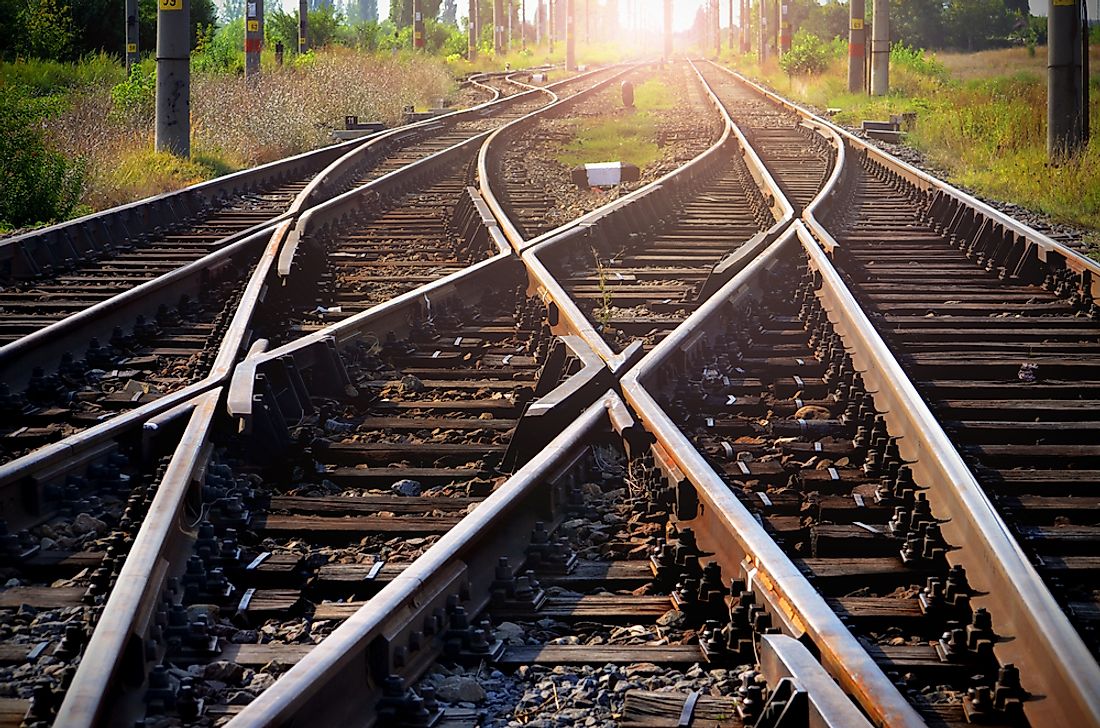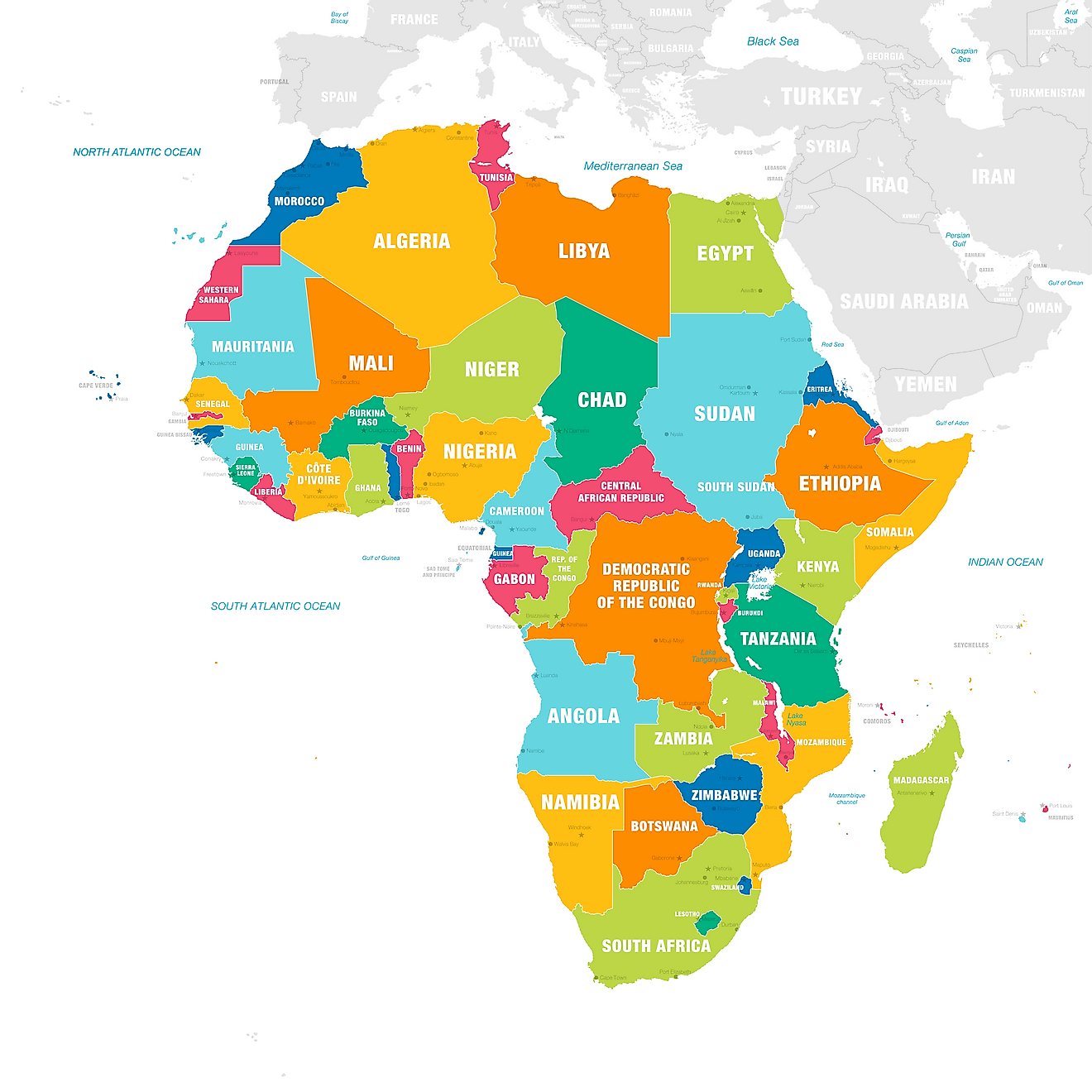Deadliest Train & Railroad Accidents In History

10. Egyptian National Railways, Al-Ayyat, Egypt, February 20, 2002 (383 dead)
A raging fire on an Egyptian train claimed the lives of 383 victims on the fateful day of February 20, 2002. The passenger train, with its eleven carriages, was travelling from Cairo to Luxor when a fire erupted in the fifth carriage of the train. Soon, the devastating fire spread had throughout the train, and seven of the carriages were burnt completely. Besides the deaths induced by fire and smoke, a number of passengers were killed as they jumped off of the speeding train to escape the fire. Since the train was overpacked on that day, and there was an absence of a full passenger list, many people claim that the actual figure of fatalities was much higher than the official number of 383.
9. Addis Ababa-Djibouti Railway, Awash, Ethiopia, January 14, 1985 (428 dead)
One of the worst rail accidents in African history occurred on January 14, 1985, when a train of the Addis Ababa Djibouti Railway derailed in Awash, Ethiopia, killing at least 428 passengers, and critically injuring several others. The train, a five-carriage passenger one carrying around 1,000 passengers, possibly derailed due to the excessive speeds it was travelling at, triggering a derailment as the train sped across a curve on a bridge above a ravine. Four of the five carriages fell into the ravine, claiming the lives of most of the passengers on board.
8. Renfe Operadora, Torre del Bierzo, Spain, January 3, 944 (~500 dead)
The Torre del Bierzo Rail Accident occurred on January 3, 1944, and killed nearly 500 people. This gruesome rail accident involved three trains colliding into each other in a tunnel near the village of Torre del Bierzo in Spain. The trains involved in the disaster were the 12-carriage-long Galicia mail express, a coal train with 27 loaded wagons, and a three-carriage shunting engine train. A brake failure in the Galicia mail train caused it to collide with the shunting engine. A fire broke out, causing a disruption in the signalling system, and then a collision of the coal train with the shunting engine, killing hundreds of passengers before the event was over.
7. Freight Train #8017, Balvano, Italy, March 2, 1944 (~560 dead)
One of the most bizarre rail accidents happened near Balvano, Italy on March 2, 1944. Train number 8017, the ill fated train in question, was heading from Salerno to a destination in a rural area to the south of the city. On the way, the train had to pass through the Galleria delle Amri Tunnel Pass just outside Balvano. Even though Train 8017 was only a freight train, it was common during the World War II era for soldiers and civilians to catch a ride on any possible train conveniently on hand that could take them to their destination. Thus, the train picked up about 560 passengers as it passed through the towns of Eboli, Persano, and Romagnano. As it began to ascend into the Galleria delle Amri Tunnel, it suddenly came to a stop. The reason of this stop is not yet clear, but this was what sealed the fate of the passengers on board the train: the train had stalled for more than 30 minutes in the tunnel. While it may seem apparently harmless, the low quality burning coal substitutes produced enough carbon monoxide to asphyxiate all of the passengers on board.
6. Kubyshev Railway, Ufa, Russia, June 4, 1989 (575 dead)
One of the worst train disasters in human history, caused by a freak, accidental explosion, claimed more than 575 innocent lives, including the lives of many children, in Ufa, Russia. On the tragic day of June 4, 1989, an LPG pipeline leak produced enough gas to leave the pipe and accumulate near a railway track lying in a gully between the Russian towns of Ufa and Asha. As two fully loaded passenger trains, running between a Black Sea holiday destination and Novosibirsk, crossed each other at full speed, the petroleum gases settled near the railway tracks were stirred up, and a spark from the track ignited the gas causing a massive explosion. The blast was so huge that it shattered the carriages of both of the trains, and flattened trees for up to a distance of 4 kilometers away, and broke windows in the town of Asha. The exact number of casualties will likely never be known, as most bodies were hardly recognizable after the blast.
5. Carranza's Military Train, Guadalajara, Mexico, January 22, 1915 (~600 dead)
On January 22, 1915, when the Mexican Revolution was at its peak, President Venustiano Carranza ordered the transfer of family members of his soldiers from Colima to Guadalajara. A twenty-carriage-long, overloaded military train left for Guadalajara, carrying passengers many times more than its carrying capacity. As per reports, there were even people clinging on to the undercarriages and roof of the train. While moving down a steep descent, the conductor of the train lost control. Thereafter, the entire train and its passengers plummeted several feet down into a deep ravine. More than 600 innocent lives were lost in this disaster.
4. Bihar Train Derailment, Bagmati River, India, June 6, 1981 (~750 dead)
Bihar in India witnessed one of the worst rail disasters in the history of mankind when a passenger train derailed on a bridge and plunged into the raging waters of the Baghmati River flowing underneath the bridge. The reason for the derailment remains unclear, though there have been several speculations as to what caused such a massive accident. According to some accounts, the engineer of the train was trying to save a cow that appeared on the tracks, and pulled the brakes too hard and caused the train to skid and tumble over the bridge. According to others, a prior monsoon had rendered the railway tracks extremely slippery, triggering the derailment. Whatever be the reason, over 750 lives were lost on that day in 1981, when seven of the nine carriages of this train fell into the river.
3. Train E-1, Ciurea, Romania, January 13, 1917 (~850 dead)
A tragic rail accident occurred on January 13, 1917, at Ciurea Station, in Romania, claiming the lives of almost 850 people. The incident, which occurred during the peak of the World War I era, was also known as the "Ciurea Catastrophe". Though little is known about the cause of this train accident, due to a lack of a proper investigation afterwards, it can be definitely be recorded as the third worst railway accident in history in terms of the number of lives lost.
2. French Military Train #612, Saint-Michel-de-Maurienne, France, December 12, 1917 (~900 dead)
A preventable disaster claimed the lives of almost 900 French soldiers returning home for the Christmas holidays almost a century ago. On December 12, 1917, a military train from Turin, Italy, bound for Lyon, France, overloaded with military men, derailed as it tried to descend down a steep slope near Modane, in France. The train fell off a bridge, with its carriages piling up on each other, causing a fire to break out in the wooden coaches. Bodies recovered from the accident site were mostly burnt beyond recognition. Though the train’s engineer had initially protested against driving a train that was overloaded with extra carriages and passengers, and lacking brakes in 16 of its carriages, he was threatened by a French officer to drive the train at gunpoint. However, his worst fears turned out to be justified when the train suffered this gruesome accident at the hands of fate.
1. Queen of the Sea Line #8050, Peraliya, Sri Lanka, December 26, 2004 (~1,700 dead)
The worst rail disaster in the history of mankind was the Sri Lankan tsunami-related rail disaster which took place on December 26, 2004, and left more than 1,700 people dead. On that fateful day, which was also a Buddhist full moon holiday and the Christmas holiday weekend, the train, locally known as the "Queen of the Sea Line", left Colombo for Galle, overcrowded with passengers. As it approached the coastal village of Peraliya, the first tsunami waves, generated by an earthquake in the Indian Ocean, approached the train and surrounded it. Locals, trusting the train as their only shield, clung to its roofs and lined up behind it. However, no one possessed any knowledge of the futility of this effort amidst the strength of the tsunami waves. The second wave to hit was a massive one, and simply picked up the train and thrashed it against the houses and trees lining the railway tracks. Many were crushed to death during this incident, while others were trapped inside the debris-filled train and drowned to death within it. Many of those who managed to escape the train were swept away. Thus, nothing could stand in the face of nature’s wrath, and the death toll soared to unimaginably high levels for this single train disaster.











